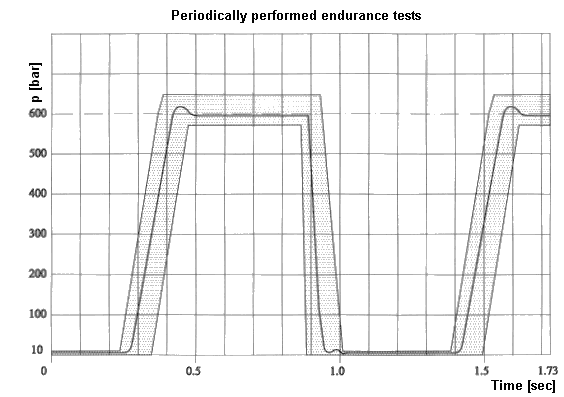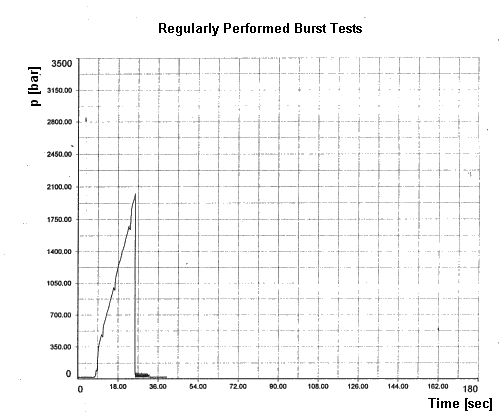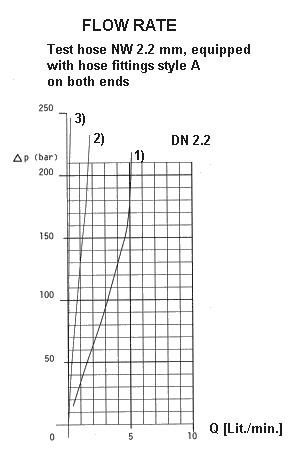
hoses for high pressure

GENERAL INFORMATION
The optimal characteristics of the P-CHECK micro hoses are reached through the use of highest quality materials: PA-NYLON 11 ® for the cover sheeting and the core tubing and a pressure bearing layer of Kevlar ® fibre. This fibre thread has the strength of steel but only 20% of its weight. Great care is dedicated to the placement of the reinforcement thread when it is braided with the angle of 54°44’in respect to the hoses’ axis.
Thereby the fibre braid reaches the highest possible volume and the hose does not change its length when subjected to pressure changes. Differing arrangements would cause the thread fibre to move against each other at the crossing points with resulting wear. PA-NYLON 11 ® is resistant to ageing and to acids and is compatible with all common hydraulic fluids. Permeation problems could be experienced with the use of some special hydraulic oils. ( Permeation is the passing of gases or fluids though solids ).
Following related research work, we manufacture our test hoses, for the paraffin free mineral oil “Aeroshell ”, using a special thermoplastic material to warrant a trouble free performance of the product.
If needed, we are glad to provide advice in this regard. With the use of mineral oil based hydraulic fluids the temperature range is - 20° C to + 100° C, short time +120° C, is warranted.
To assure a constant quality level, P-CHECK micro hoses are regularly subjected to endurance test on impulse test benches, namely at the pressure intensity of 600 bar and the duration of not less then 200 impulses according SAE:

In addition we regularly subject our micro hoses, with assembled crimp fittings, also to burst tests:

Achieved Maximal Values : P = 1.900 - 2.100 bar
BURST PRESSURE AT +20° C
With increasing operating temperature the maximum values will be reduced in the frame of 0° = 100% to 100° C = 63%
The P_CHECK test hoses bear the marking “burst pressure 1.800 bar.

The achievable flow rates are directly related to the length of the hose.
The following values have been measured:
-
Lenght = 1 m Q= 3.190 lit/min p = 100 bar
-
Lenght = 10 m Q= 0.750 lit/min p = 100 bar
-
Lenght = 50 m Q= 0.074 lit/min p = 100 bar
with the use of mineral oil IP Hydrus Oil 46 at 20° C
Note:
In a test hose of 1 m length, the flow rate does not increase even if the pressure drop exceeds Dp = 160 bar. Evidently the flow is no longer
laminar but becomes extremely turbulent.
